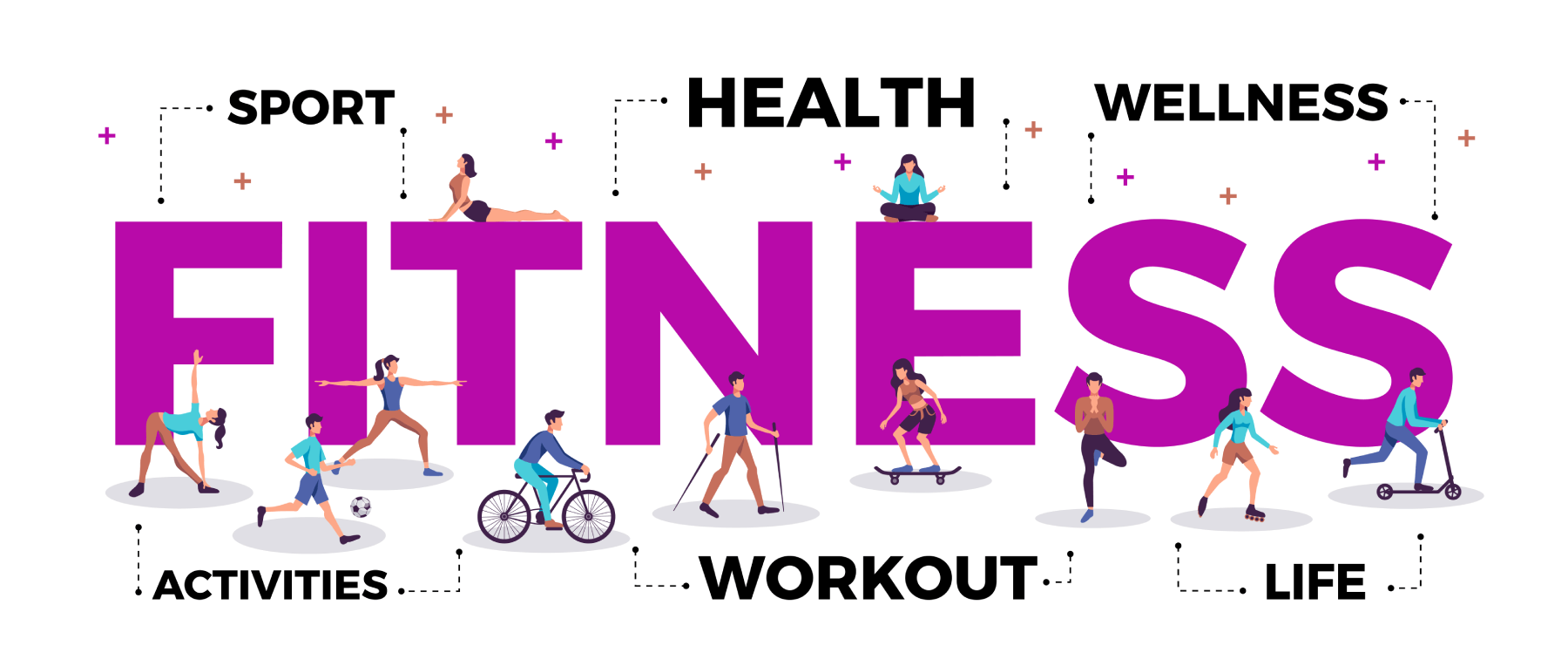Embarking on a fitness journey can be overwhelming, especially for beginners who may struggle to find their motivation and establish a routine. This article provides practical strategies for identifying personal motivations, exploring various fitness modalities, creating a sustainable routine, and tracking progress while celebrating milestones. By implementing these approaches, you can build a fitness plan that not only aligns with your goals but also keeps you engaged and motivated throughout your journey. Whether you’re looking to improve your health, boost your confidence, or simply enjoy a more active lifestyle, these insights will help you navigate the challenges of fitness effectively.
In this article you will find:
Finding Your Personal Motivation
Embarking on a fitness journey can be both exciting and daunting, especially for beginners. One of the most crucial elements in this journey is finding your personal motivation. Understanding what drives you to pursue fitness is essential for establishing a lasting commitment. This section will explore various strategies to identify and harness your motivation, ensuring that your path to health is both fulfilling and sustainable.
Understanding Your Why
Before you can find your personal motivation, it’s important to delve into the underlying reasons for your desire to get fit. Ask yourself the following questions:
- What do I hope to achieve through fitness?
- Am I looking to improve my health, boost my confidence, or enhance my physical appearance?
- Do I want to set a positive example for my family or friends?
Reflecting on these questions can help clarify your motivations. It’s often beneficial to write down your answers, as this can serve as a reminder of your goals during challenging times.
Setting Meaningful Goals
Once you have a clear understanding of your motivations, the next step is to set meaningful goals. Goals should be specific, measurable, attainable, relevant, and time-bound (SMART). For example, instead of saying, “I want to get fit,” consider a more specific goal like, “I want to run a 5K in three months.” This approach not only provides direction but also allows you to track your progress.
Additionally, consider breaking larger goals into smaller milestones. Celebrating these small victories can provide a significant boost in motivation and reinforce your commitment to your fitness journey.
Creating a Support System
Having a strong support system can greatly enhance your motivation. Surround yourself with individuals who encourage your fitness goals, whether they are friends, family, or fellow fitness enthusiasts. Joining a fitness group or community can also provide accountability and camaraderie.
Consider exploring local fitness classes or online communities that resonate with your interests. Engaging with like-minded individuals can inspire you to push through challenges and stay committed to your goals.
Embracing a Positive Mindset
Your mindset plays a pivotal role in your motivation. Embracing a positive outlook can help you overcome obstacles and setbacks. Practice self-compassion and remind yourself that progress takes time. Incorporating mindfulness techniques, such as meditation or journaling, can also enhance your mental resilience.
Moreover, consider listening to motivational podcasts or reading inspirational books. For instance, The Michelle Chalfant Show offers valuable insights on personal transformation and self-discovery, which can further fuel your motivation.
Reflecting on Your Progress
Regularly reflecting on your progress is crucial for maintaining motivation. Take time to assess what is working and what isn’t. This reflection can help you adjust your goals and strategies, ensuring that they remain aligned with your evolving motivations.
Consider keeping a fitness journal to document your experiences, challenges, and triumphs. This practice not only tracks your progress but also serves as a motivational tool that reminds you of how far you’ve come.
In conclusion, finding your personal motivation is a multifaceted process that involves understanding your why, setting meaningful goals, building a support system, cultivating a positive mindset, and reflecting on your journey. By implementing these strategies, you can unlock your potential and embark on a transformative fitness journey that is uniquely yours.
Exploring Different Fitness Modalities
As you embark on your fitness journey, one of the most exciting aspects is discovering the various fitness modalities available to you. With an array of options ranging from traditional workouts to innovative practices, exploring different fitness modalities can help you find the right fit for your lifestyle, preferences, and goals. This section will delve into popular fitness modalities, their benefits, and how to choose the best ones for your unique journey.
Understanding Fitness Modalities
Fitness modalities refer to the different types of exercise or physical activity that can help improve your overall health and fitness. Each modality offers distinct benefits, and understanding these can guide you in selecting the right combination for your routine. Here are some of the most popular fitness modalities:
- Aerobic Exercise: Activities like running, cycling, and swimming that elevate your heart rate and improve cardiovascular health.
- Strength Training: Resistance exercises using weights or body weight to build muscle strength and endurance.
- Flexibility and Mobility Training: Practices such as yoga and Pilates that enhance flexibility, balance, and core strength.
- High-Intensity Interval Training (HIIT): Short bursts of intense exercise followed by rest periods, effective for burning fat and improving endurance.
- Functional Fitness: Training that mimics everyday movements to improve overall functionality and reduce injury risk.
Benefits of Diverse Modalities
Engaging in a variety of fitness modalities can offer numerous benefits:
- Reduced Boredom: Mixing different types of workouts keeps your routine fresh and exciting, reducing the likelihood of burnout.
- Comprehensive Fitness: Combining modalities can lead to balanced fitness, addressing strength, endurance, flexibility, and overall health.
- Enhanced Motivation: Trying new modalities can reignite your passion for fitness and inspire you to push your limits.
- Injury Prevention: A well-rounded fitness approach can help prevent overuse injuries by varying the types of stress placed on your body.
Choosing the Right Modalities for You
With so many options available, how do you choose the right fitness modalities for your journey? Consider the following factors:
- Your Goals: Are you looking to lose weight, build muscle, improve endurance, or enhance flexibility? Identifying your primary goals will help narrow down your options.
- Your Interests: Choose activities that you genuinely enjoy. If you dislike running, for example, consider cycling or dance-based workouts instead.
- Your Schedule: Consider how much time you can realistically dedicate to fitness each week. Some modalities may require more time than others.
- Access to Facilities: Determine what resources are available to you, such as gyms, studios, or outdoor spaces. This can influence your choice of modalities.
Staying Informed on Emerging Trends
As the fitness industry continues to evolve, new modalities and trends emerge regularly. Staying informed about these developments can help you discover exciting new options that align with your interests. For instance, practices like barre workouts and virtual fitness classes have gained popularity, offering unique experiences that cater to diverse preferences.
For more insights on innovative fitness trends, consider exploring resources like Trident Athletics, which provides valuable tips on maintaining an active lifestyle and embracing new fitness modalities.
Conclusion
Exploring different fitness modalities is a vital step in your journey to finding what resonates with you. By understanding the various options available and considering your personal goals and preferences, you can create a diverse and enjoyable fitness routine that keeps you motivated and engaged.
Creating a Sustainable Routine
Establishing a sustainable fitness routine is essential for long-term success in your health and wellness journey. A well-structured routine not only helps you achieve your fitness goals but also ensures that you can maintain your progress over time. This section will guide you through the key components of creating a sustainable routine that fits seamlessly into your lifestyle.
Assessing Your Current Lifestyle
The first step in creating a sustainable routine is to assess your current lifestyle. Understanding your daily commitments, energy levels, and personal preferences will help you design a routine that is both realistic and enjoyable. Consider the following questions:
- How much time can I realistically dedicate to fitness each week?
- What times of day do I feel most energized and motivated to exercise?
- What types of activities do I enjoy, and how can I incorporate them into my routine?
By answering these questions, you can create a personalized plan that aligns with your life, making it easier to stick to your routine.
Setting a Consistent Schedule
Consistency is key to building a sustainable fitness routine. Establishing a regular schedule helps create a habit, making it easier to incorporate exercise into your daily life. Here are some tips for setting a consistent schedule:
- Choose Specific Days and Times: Select specific days and times for your workouts, treating them as unmissable appointments.
- Mix It Up: Incorporate a variety of activities throughout the week to keep your routine engaging and prevent boredom.
- Be Flexible: Life can be unpredictable, so allow for adjustments. If you miss a workout, reschedule it rather than abandoning your plan altogether.
Incorporating Recovery and Rest Days
While it may be tempting to push yourself to the limit, incorporating recovery and rest days is crucial for a sustainable routine. These days allow your body to heal and adapt, reducing the risk of injury and burnout. Consider the following:
- Active Recovery: Engage in low-intensity activities such as walking, yoga, or stretching on rest days to promote recovery without complete inactivity.
- Listen to Your Body: Pay attention to signs of fatigue or soreness. If you need an extra rest day, don’t hesitate to take it.
Tracking Progress and Making Adjustments
Tracking your progress is essential for maintaining motivation and ensuring that your routine remains effective. Consider using a fitness journal or an app to log your workouts, monitor your progress, and celebrate your achievements. Here are some key metrics to track:
- Workout Frequency: Keep a record of how often you exercise each week.
- Performance Metrics: Track improvements in strength, endurance, or flexibility, depending on your goals.
- Personal Reflections: Note how you feel after workouts, both physically and mentally, to gauge your overall well-being.
Regularly reviewing your progress allows you to identify what is working and what may need adjustment. Don’t hesitate to modify your routine to better align with your evolving goals and preferences.
Seeking Support and Accountability
Having a support system can significantly enhance your commitment to a sustainable routine. Consider the following ways to seek support:
- Workout Buddy: Partnering with a friend or family member can provide motivation and accountability.
- Join a Class or Group: Participating in group fitness classes or online communities can foster a sense of belonging and encouragement.
- Professional Guidance: Hiring a personal trainer or fitness coach can provide personalized advice and keep you accountable to your goals.
For more insights on maintaining an active lifestyle, check out Trident Athletics, which offers valuable tips for individuals at various fitness levels.
Conclusion
Creating a sustainable fitness routine involves assessing your lifestyle, setting a consistent schedule, incorporating recovery, tracking progress, and seeking support. By focusing on these elements, you can establish a routine that not only helps you achieve your fitness goals but also becomes an enjoyable part of your daily life.
Tracking Progress and Celebrating Milestones
Tracking your progress and celebrating milestones are vital components of any successful fitness journey. By monitoring your achievements, you not only stay motivated but also gain valuable insights into what works for you. This section will explore effective methods for tracking progress and the importance of recognizing milestones in your fitness routine.
The Importance of Tracking Progress
Keeping track of your fitness progress serves several purposes:
- Accountability: Regularly logging your workouts and nutrition holds you accountable to your goals.
- Motivation: Seeing tangible progress can boost your motivation and encourage you to push harder.
- Insight: Tracking helps identify patterns, allowing you to adjust your routine for optimal results.
- Goal Setting: By understanding your progress, you can set realistic and achievable goals moving forward.
Effective Methods for Tracking Progress
There are various ways to track your fitness journey. Here are some effective methods:
- Fitness Apps: Utilize apps like MyFitnessPal or Strava to log workouts, track nutrition, and monitor progress over time.
- Wearable Technology: Devices like fitness trackers or smartwatches can provide real-time data on your activity levels, heart rate, and sleep patterns.
- Workout Journal: Keeping a physical or digital journal allows you to document your workouts, thoughts, and feelings about your progress.
- Progress Photos: Taking regular photos can visually document your transformation and serve as a powerful motivator.
Recognizing Milestones
Celebrating milestones is just as important as tracking progress. Recognizing achievements, no matter how small, helps reinforce positive behavior and keeps you engaged in your fitness journey. Here are some ways to celebrate milestones:
- Reward Yourself: Treat yourself to something special, such as new workout gear or a massage, when you reach a significant goal.
- Share Your Success: Share your achievements with friends, family, or social media communities to inspire others and receive encouragement.
- Reflect on Your Journey: Take time to reflect on how far you’ve come, the challenges you’ve overcome, and the lessons learned along the way.
- Set New Goals: After achieving a milestone, set new, challenging goals to keep your momentum going.
Creating a Milestone Map
To effectively celebrate milestones, consider creating a milestone map. This visual representation outlines your goals and the steps needed to achieve them. Include short-term goals, such as completing a certain number of workouts per week, and long-term goals, like running a marathon or achieving a specific weight. This approach not only keeps you focused but also provides a clear roadmap to success.
For more insights on maintaining motivation and celebrating achievements, check out Trident Athletics, which offers valuable tips for individuals at various fitness levels.
Conclusion
Tracking progress and celebrating milestones are essential strategies for sustaining motivation and ensuring success in your fitness journey. By employing effective tracking methods and recognizing your achievements, you can create a fulfilling and rewarding experience that keeps you committed to your goals. Tracking progress and celebrating milestones are crucial for maintaining motivation in your fitness journey. By regularly logging workouts and nutrition, you hold yourself accountable and gain insights that help refine your routine. Effective tracking methods include using fitness apps, wearable technology, and maintaining a workout journal. Additionally, taking progress photos can visually document your transformation and serve as a motivational tool.
Recognizing achievements, no matter how small, reinforces positive behavior and keeps you engaged. Celebrate milestones by rewarding yourself, sharing successes with your community, and reflecting on your journey. Consider creating a milestone map to visualize your goals and the steps needed to achieve them, ensuring you stay focused and motivated as you progress in your fitness endeavors.




